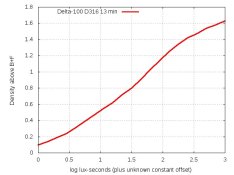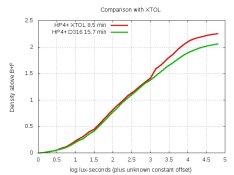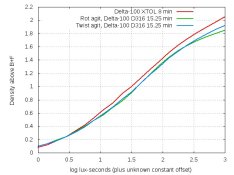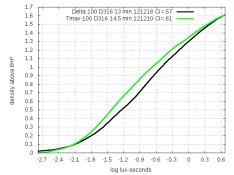Tmax-400 (TMY2) is acting weird again. It has an odd two-slope density-curve with both XTOL and D316. But all other films are behaving fine.
You might remember almost a year ago, that TMY2 was giving me thin results with both XTOL and home-brews. I discovered that presoaking improved density. That's still true (see graph below), but TMY2 is acting odd even with a presoak. Here are the curves:
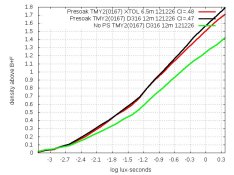
XTOL and D316 (with presoak) are about the same, having two slopes with an inflexion at X=-1.3, and with slightly stronger highlights in D316. But
not presoaking loses much density (green curve).
Other odd symptoms include:
- The fixer used to pour out magenta. Now it's clear.
- The early wash-water used to pour out magenta. Now it's clear.
- The negatives have a strong magenta cast. Even washing for 30 minutes didn't help. Even warming some wash water to just over 20C didn't help.
The batch-number of TMY2 has changed. It's now 0167; for months it's been 0166.
For comparison, here's a roll of Tri-X developed two days later. It has a perfect near-straight-line curve:
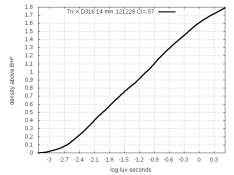
All other films are behaving okay also. For example, here's a roll of FP4+ developed the same day as the Tri-X:
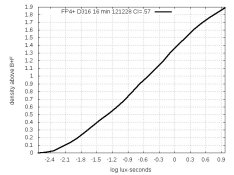
I'm reluctant to blame Kodak, but the batch-number has changed and suddenly these issues appeared. OTOH, it is winter, and my wash-water is cooler at 18C which could make it harder to clear the magenta dye. But that wouldn't reduce density. Or would it?
Mark Overton
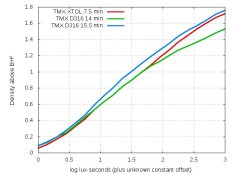








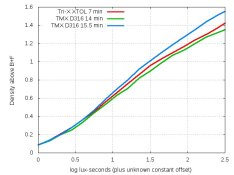
 And grain should still be finer.
And grain should still be finer.